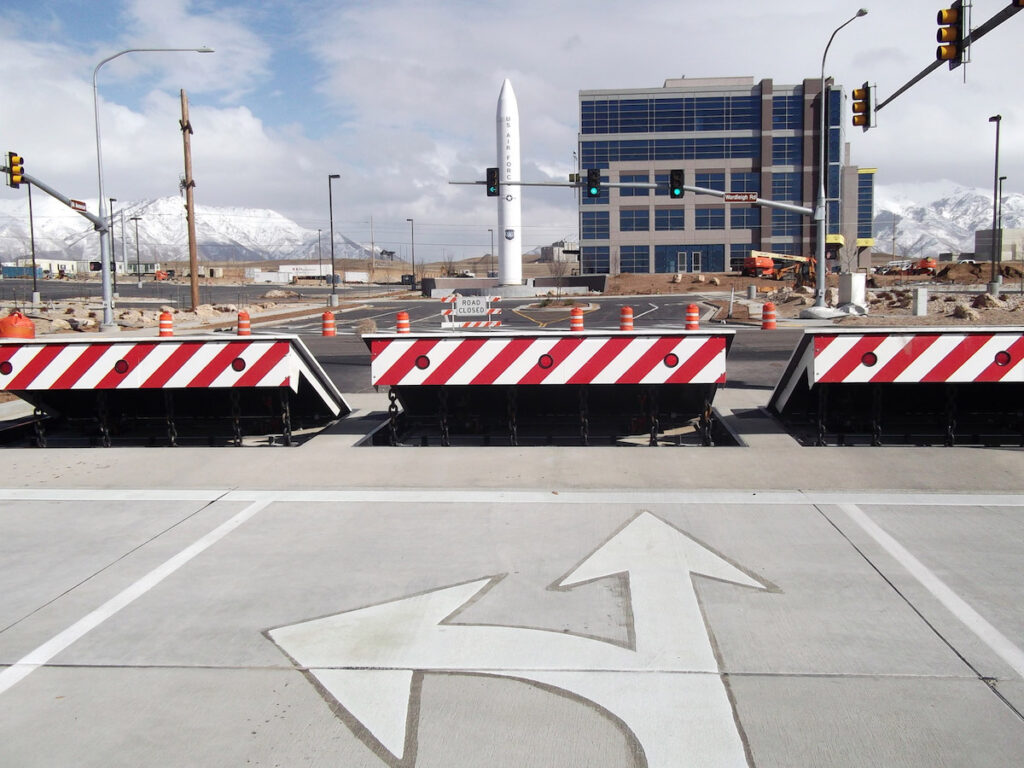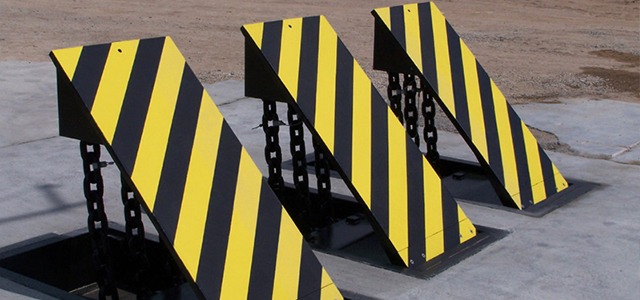A Biased View of Wedge Barriers
Wiki Article
Wedge Barriers for Beginners


The springtime rod 58 is paired to a camera(e. g., image source cam 80 received FIG. 4) of the lifting mechanism 50. The springtimes 60 disposed regarding the springtime pole 58 are held in compression by springtime supports 62, including a taken care of springtime assistance 64. That is, the fixed spring support 64 is repaired about the foundation 14 and the rest of the bather 10.
Rumored Buzz on Wedge Barriers
The continuing to be pressure applied to the cam to deploy the wedge plate 16 may might provided given an electromechanical actuator 84 or other various other. The springtime assembly 54 and the actuator 84(e. Wedge Barriers. g., electromechanical actuator)might operate together to translate the web cam and lift the wedge plate 16.
As pointed out above, the spring setting up 54 applies a constant force on the web cam, while the electromechanical actuator might be managed to apply a variable pressure on the cam, therefore enabling the training and decreasing( i. e., releasing and withdrawing )of the wedge plate 16. In certain personifications, the consistent force used by the springtime setting up 54 might be flexible. g., electromechanical actuator) is handicapped. As will be appreciated, the spring assembly 54 might be covered and secured from debris or various other aspects by a cover plate(e. g., cover plate 68 received FIG. 4) that might be considerably flush with the elevated surface 38 of the foundation 14. As discussed above, in the deployed position, the wedge plate 16 serves to block access or traveling past the obstacle 10. For instance, the obstacle 10(e. g., the wedge plate 16 )may block pedestrians or automobiles from accessing a building or path. As discussed above, the barrier 10 is connected to the support 30 safeguarded within the structure 14,

front brackets 71. Because of this, the link settings other up 72 might pivot and revolve to additional reading make it possible for the collapse and expansion of the linkage assemblies 72 during retraction and release of the bather 10. The linkage settings up 72 reason movement of the wedge plate 16 to be limited. As an example, if a car is taking a trip in the direction of the released wedge plate 16(e. For instance, in one condition, the safety and security legs 86 might be extended throughoutupkeep of the obstacle 10. When the safety legs 86 are released, the safety and security legs 86 sustain the weight of the wedge plate 16 versus the surface 12. Consequently, the lifting mechanism 50 might be shut down, serviced, gotten rid of, changed, and so forth. FIG. 5 is partial perspective view of a personification of the surface-mounted wedge-style obstacle 10, showing the webcam 80 and the web cam surfaces 82 of the training device 50. Particularly, two cam surface areas 82, which are described as reduced webcam surfaces 83, are placed listed below the camera 80. The lower cam surface areas 83 may be repaired to the surface area 12 (e. For instance, the lower cam surface areas 83 and the installing plate 85 may create a solitary piece that is secured to the support 30 by bolts or various other mechanical bolts. Additionally, 2 camera surfaces 82, which are described as top cam surface areas 87, are positioned over the camera 80 and coupled to (e. In other embodiments, stepping in layers or plates may be placed in between the surface area 12 and the reduced camera surfaces 83 and/or the wedge plate 16 and the top web cam surface areas 87 As discussed over, the webcam 80 converts along the camera surfaces 82 when the wedge plate 16 is lifted from the retracted setting to the deployed setting. Additionally, as pointed out above, the springtime assembly 54 (see FIG. 3 )might give a force acting upon the cam 80 in the instructions 102 via spring pole 58, which may minimize the pressure the electromechanical actuator 84 is required to relate to the cam 80 in order to actuate and raise the wedge plate 16. 1 )to the deployed setting(see FIG. 4). As shown, the webcam 80 consists of track wheels 104(e. g., rollers), which contact and equate along the web cam surfaces 82 during procedure.
Report this wiki page